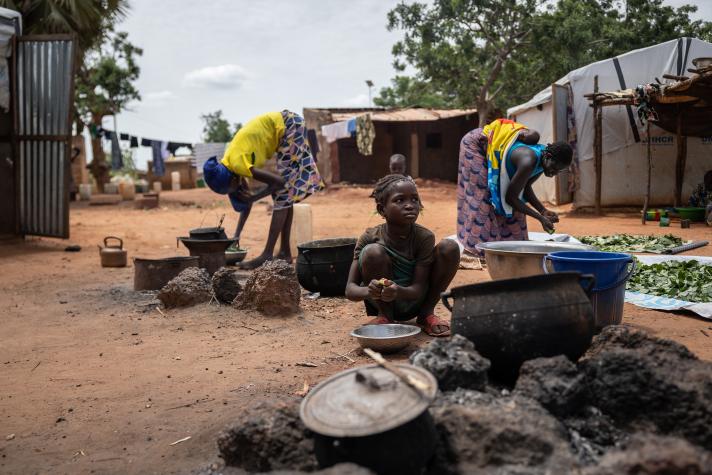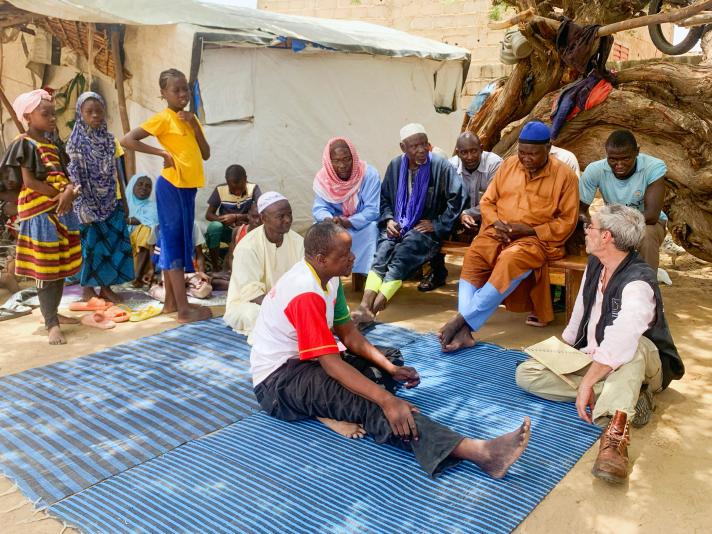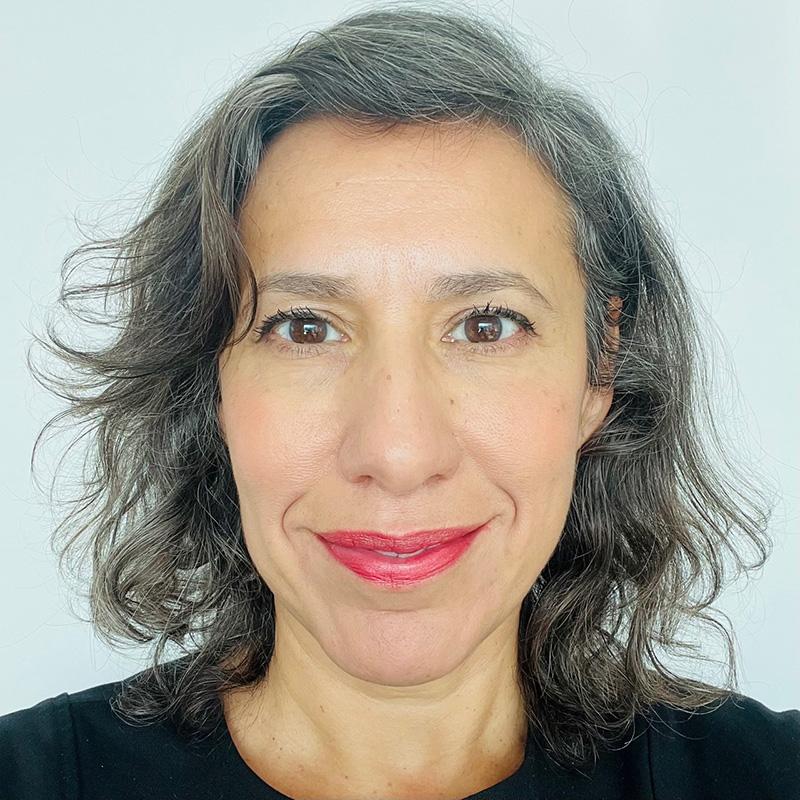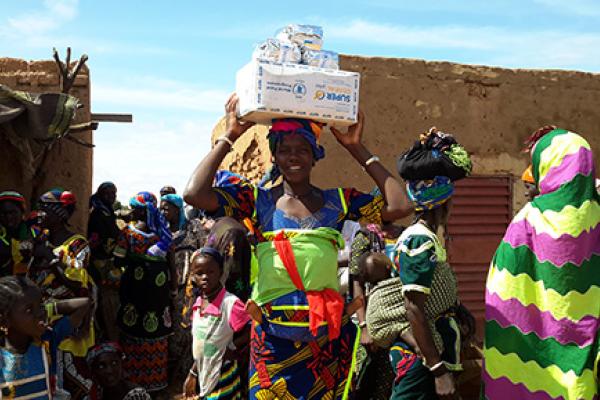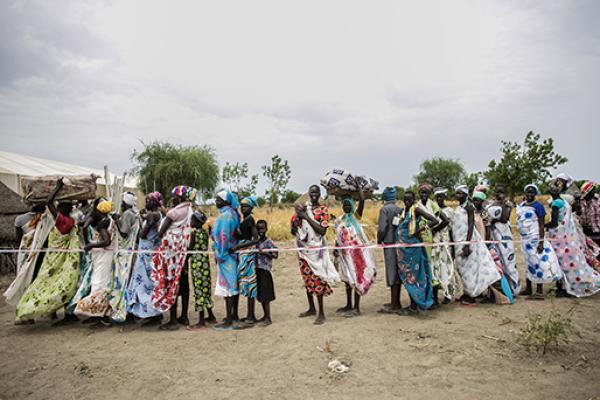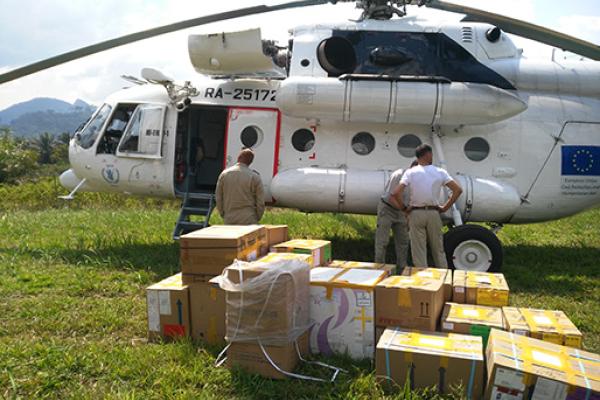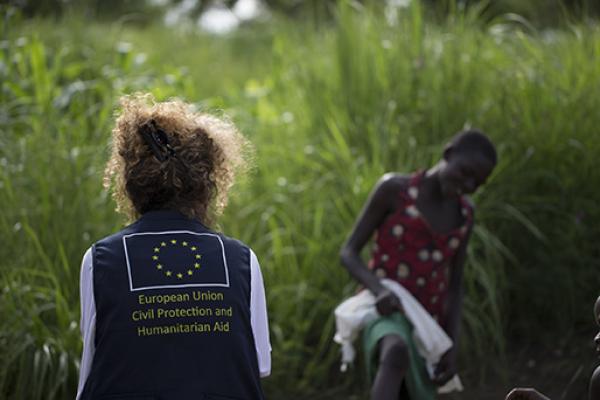As an 18-year-old biker he wanted to motorcycle from France to the Indian Ocean in Tanzania, but when he reached Burkina Faso, Patrick had a change of heart. He decided to stay. There was no tropical beach here, and the landlocked country was one of the poorest in the world, but at the height of Sankarism in 1986 it was a hotbed of revolutionary ideas and invigorating social reforms.
He fell in love with the country, its people, their hospitality, and the revolution.
However, when Thomas Sankara, the pan-African and anti-imperialist president, was assassinated a year later Patrick’s project to set up a sugar factory in the southwest of the country was abandoned. Disillusioned, he left the country.
Fast-forward to 2024, Patrick, with over 25 years of humanitarian work in Africa, returned to Burkina Faso to oversee the EU’s humanitarian aid. As he prepares to leave the country and the continent again, we asked him, for World Humanitarian Day, to look back on his time in Burkina Faso.
The country is still one of the world’s poorest and now also the theatre of an extremist insurgency and political instability.
Patrick leaves devastated, once again, but not hopeless. Here are the 5 things he wants you to know about Burkina Faso’s humanitarian crisis.
1-- Burkina Faso is the most neglected displacement crisis in the world
The country tops the Norwegian Refugee Council (NRC)’s list of most neglected displacement crises. In this once peaceful country, an estimated 2 to 3 million people are today uprooted from their homes.
Burkina Faso went from being a poor developing country to a major humanitarian crisis since 2019. Structural poverty and cyclical food crises linked to drought and climate change pre-existed but then localised conflict with extremist groups in the Sahel region progressively spread to other parts of the country.
In 2022, it was the fastest developing displacement crisis which has also created immense pressure on the populations hosting those on the move. Many localities have doubled in population and basic services are collapsing. More than 500 health centres and 20% of schools have closed.
2-- Burkina Faso is the country with the most people killed in terrorist attacks
It is the first time in 13 years that a country other than Afghanistan or Iraq tops the ranking of the Global Terrorism Index (GTI), with 25% of all victims worldwide being Burkinabè. 2,598 people have reportedly been killed in the first half of 2024 alone. As violence and militarisation increase, civilians are caught between the hammer and anvil, and are subjected to violence from all sides.
3-- In no-go zones, millions of people are cut off from aid
Access to 40 enclaves under blockade by non-state armed groups is extremely challenging, with some areas completely inaccessible. These zones home up to 4 million people, suffer from measles epidemics, malnutrition, increased deaths and near-famine conditions.
In Diapaga, people are in a state of total disarray. They are continuously threatened by armed groups and feel abandoned. The week before our visit, 53 women had been abducted. The decorative red-flower flamboyant trees were entirely stripped of their leaves because people are eating anything they can find.
4-- Humanitarians must have access to provide impartial aid
Humanitarian access has shrunk to a minimum, with half the territory unreachable. Enclaves are only accessible via irregular military convoys which put civilians at risk.
As humanitarians we use helicopters to reach enclaves where no convoys can go safely, though these deliveries are 14 times more costly than road transport. It represents a heavy financial burden on an already underfinanced response. And this allows us to reach just 80,000 people every month.
We saw pregnant and breastfeeding women going compound-to-compound begging for food. The few remaining health staff, who are doing such a heroic work, are exhausted and burned out.
5-- We must find ways to end violations of Humanitarian Law and depoliticise aid
A distinction must be made between civilians and armed groups, they should not be assimilated. Civilians shouldn’t be subjected to unlawful killings or suffer indiscriminate violence and retribution for acts they bear no responsibility for.
Humanitarian aid should not serve political or military purposes, and famine should not be used as a weapon of war. Vulnerable people affected by conflict have the right to assistance regardless of who controls the territory in which they find themselves. We need to depoliticise aid.
If we would be allowed to use air drops, we could deliver 5 times more food to the starving people in blockaded areas. And using electronic vouchers we could react rapidly in places where markets are still functioning while ensuring all required safeguards and traceability.
Finally, humanitarian aid cannot make up for the decline in development aid, so we need donors to urgently re-engage, support social services, and help prevent a further deterioration of the social cohesion between communities.
Even if the situation is bleak, I do believe we can and must do more to make sure no one is left behind.


